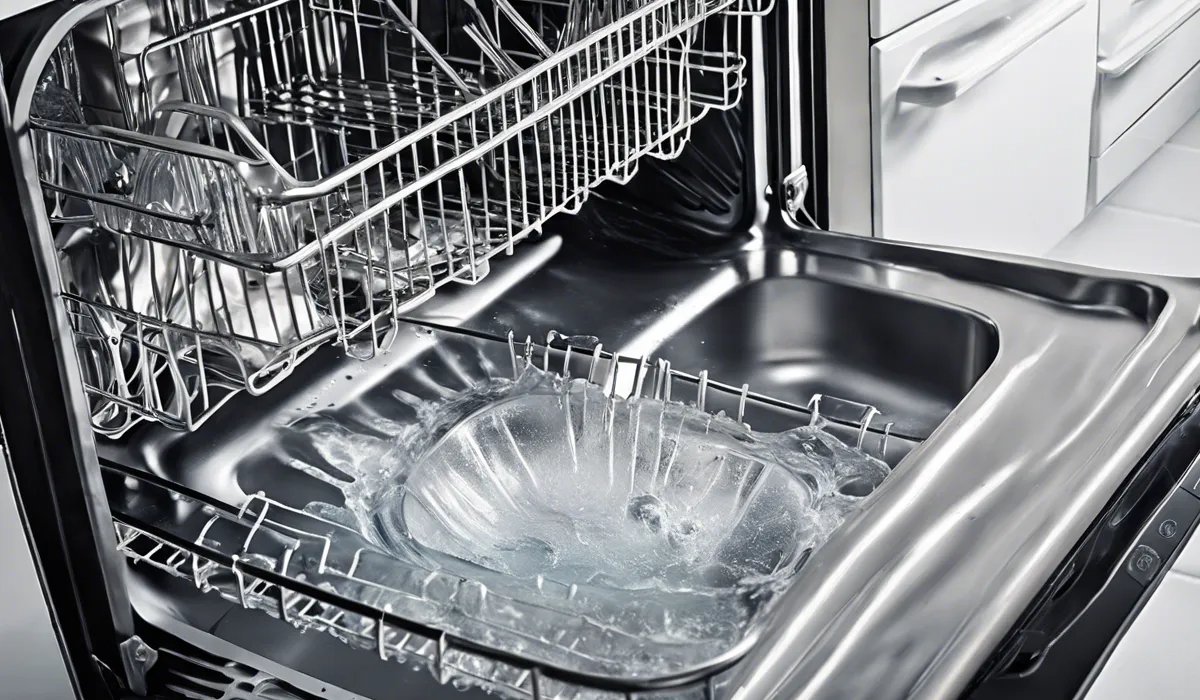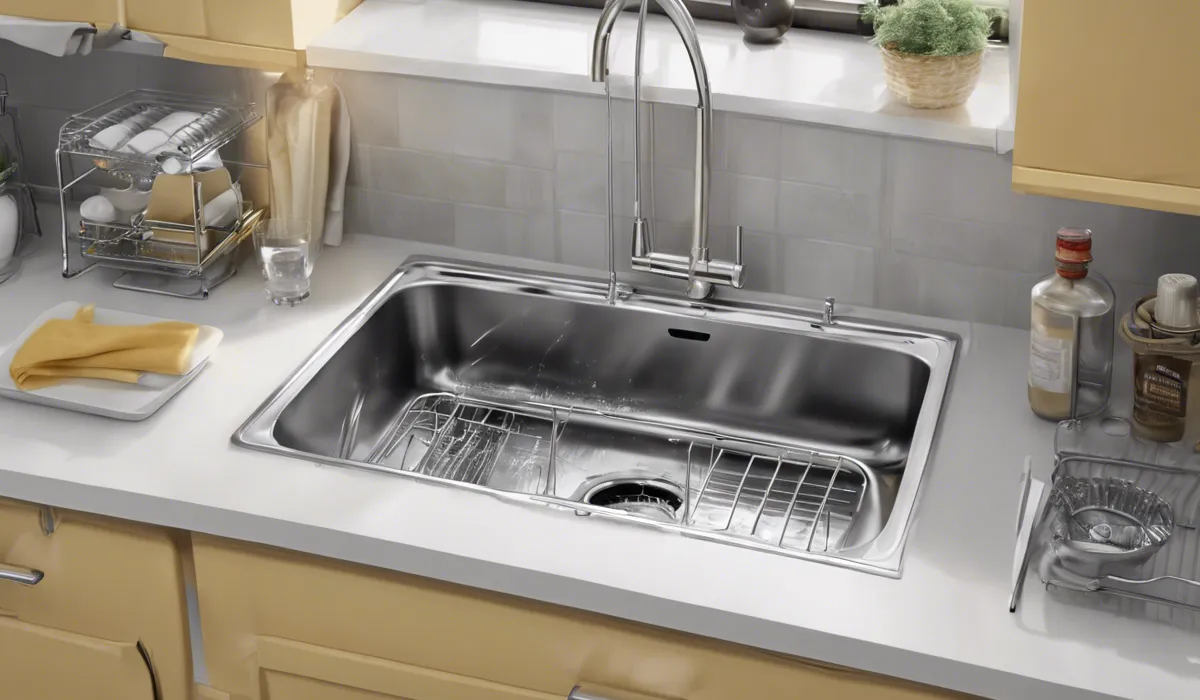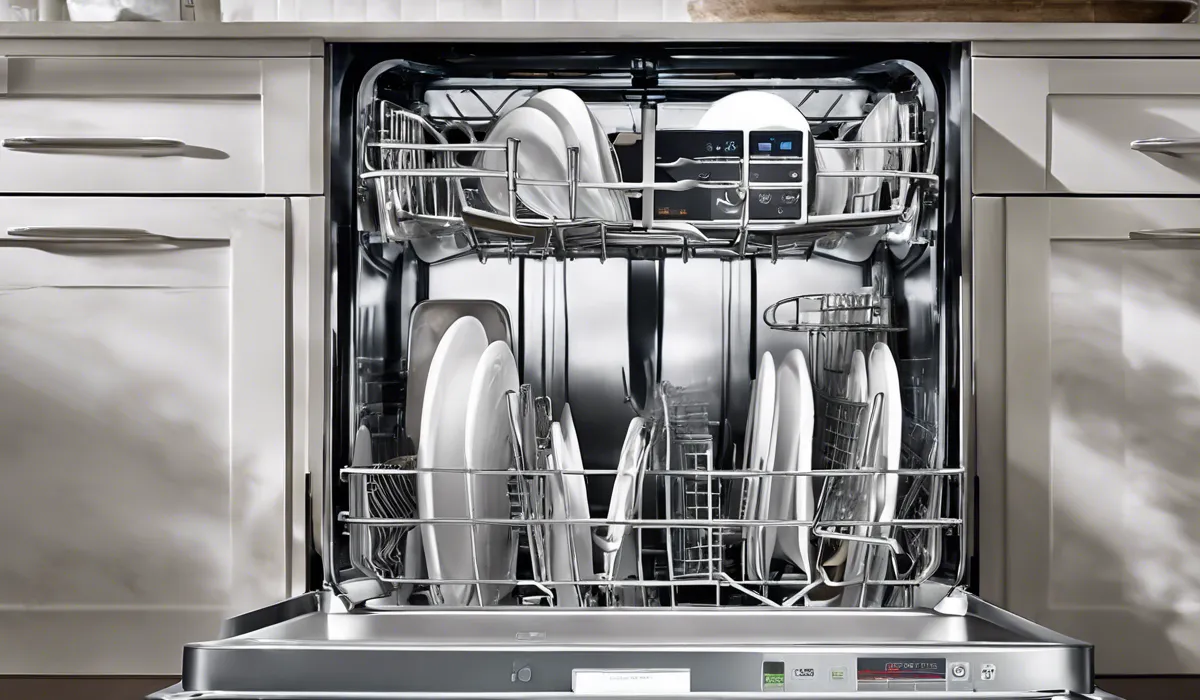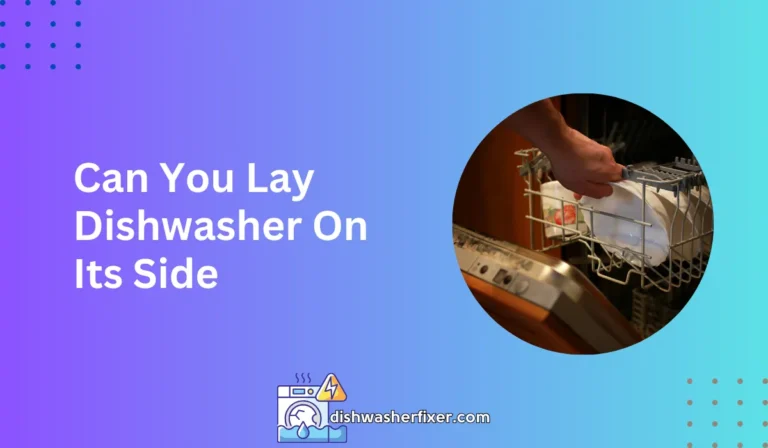How to Drain a Dishwasher with Standing Water: Quick Fix
To drain a dishwasher with standing water, start by scooping out the water manually. Then, check and clean the filters. Next, use a plunger on the drain or a plumber’s snake to dislodge clogs. Finally, run a rinse cycle to clear remaining debris.
Diagnosing the Cause of Standing Water

Identifying Clogs in Drain Basket and Filter
One of the first steps in tackling standing water in your dishwasher is to check for obvious clogs in the drain basket and filter.
These components can gather food particles and debris over time, which may obstruct water flow.
Remove the bottom rack to access the drain basket and filter. Examine them carefully and remove any visible obstructions. If you find significant buildup, this could be the culprit of your drainage issue.
Examining the Drain Hose
The drain hose, which carries water from the dishwasher to the sink drain or garbage disposal, is another common location for clogs or kinks. Trace the hose from the dishwasher to where it connects under the sink.
If you locate any bent sections, straighten them out. Feel along the hose to detect if there are any solid blockages inside.
If the hose is clear but problems persist, it may need to be detached for a more thorough inspection.
Checking the Garbage Disposal Connection
If your dishwasher drains through the garbage disposal, a clog or issue there could impact your dishwasher. Make sure the disposal is clear and running smoothly.
If you’ve recently installed a garbage disposal, ensure the drain plug inside the connection to the dishwasher has been removed. This is a common oversight that can prevent water from draining out of the dishwasher.
Running a Diagnostic Drain Cycle
After checking the physical components for blockages, run a diagnostic drain cycle. Most dishwashers have a cancel or drain function that can be used to test the draining capability.
Listen for the pump during this cycle; if it sounds abnormal or you don’t hear it at all, there might be an issue with the pump or the electrical connections powering it.
Manual Drainage Methods

Preparation for Manual Drainage
Before manually draining your dishwasher, always unplug the appliance or turn off the circuit breaker to avoid electric shock.
Wear safety gloves to protect your hands from sharp objects that may be lurking in the standing water. Gather the necessary tools and materials, such as cups, bowls, towels, and sponges.
Scooping Out Standing Water
Using a cup or bowl, begin to scoop out the standing water in the dishwasher. Transfer the water to a sink or a bucket.
Continue this process until you have removed as much water as possible. For the water that’s too shallow to scoop, you’ll need to move on to the next step.
Absorbing Remaining Moisture
After you’ve scooped out the bulk of the water, use towels or sponges to soak up the remaining moisture at the bottom of the dishwasher.
Ring out the towels or sponges into a sink or bucket as they become saturated. This will help you to get to the root of the clog without water getting in the way.
Safe Disposal of Drained Water
When disposing of the water you’ve manually drained from the dishwasher, ensure that it’s done safely and hygienically.
Pour the water down a utility sink or the kitchen sink, but make sure the sink is clear of any blockages first. This helps prevent transferring the problem from the dishwasher to the sink.
Repair and Prevention

Thorough Cleaning of Drain Basket and Filter
Once the standing water has been removed, clean the drain basket and filter thoroughly. These components should be regularly cleaned to prevent future clogs.
Use a soft brush and soapy water to scrub away any lingering debris. For tough buildup, soaking the parts in warm, soapy water can help loosen the grime.
Drain Hose Maintenance
Regularly check and clean the drain hose to prevent blockages. Disconnect the hose from both the dishwasher and the sink or garbage disposal to check for clogs.
If a clog is present, you can try to flush it out with water or use a plumber’s snake to dislodge it. Ensure that the hose is securely reattached and has no kinks or bends after maintenance.
Garbage Disposal Care
To ensure that your garbage disposal doesn’t cause future dishwasher drainage problems, maintain it properly by running it regularly and keeping it clear of large, fibrous, or hard waste. Use cold water while the disposal is operating to solidify any grease or oil, making it easier to grind and flush away.
Establishing a Dishwasher Maintenance Routine
To prevent standing water and other issues, set a regular maintenance schedule for your dishwasher.
This includes cleaning the filters, checking the spray arms, and using a dishwasher cleaner to remove any hidden grease and limescale. A well-maintained dishwasher is less likely to face drainage problems and will operate more efficiently.
FAQs About Draining a Dishwasher with Standing Water
How do I manually remove standing water from my dishwasher?
Start by scooping out the water manually using a cup or a small container, and then mop up the remaining moisture with towels or sponges.
What should I check if my dishwasher isn’t draining properly?
Check and clean the dishwasher filters to ensure they are not clogged with food particles or debris.
How can I dislodge a clog in my dishwasher’s drain?
Use a plunger to create suction over the drain, or carefully insert a plumber’s snake to dislodge any clogs in the drain line.
Is there a way to clear remaining debris from the dishwasher after unclogging it?
Yes, run a rinse cycle without dishes to flush out any remaining debris from the dishwasher.
What should I do if my dishwasher is still not draining after these steps?
If the dishwasher still has standing water after these steps, it may require professional repair or there could be a deeper issue with the plumbing that needs to be addressed.
Final Thoughts
Draining a dishwasher with standing water involves a hands-on approach. Begin by manually removing the water. Inspect and clean the filters for any blockage.
If necessary, employ a plunger or plumber’s snake to tackle tough clogs. To ensure a clear path for future drainage, conclude with a rinse cycle to flush out residual debris.






